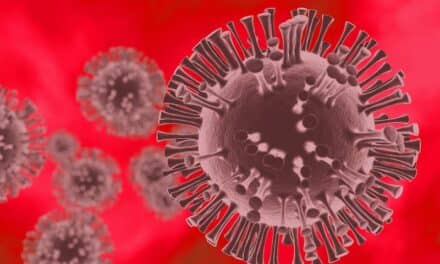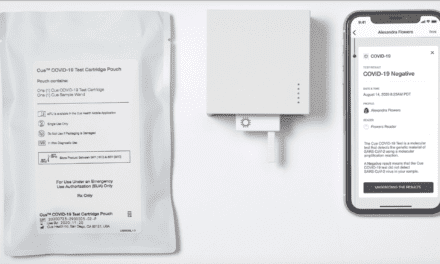The changes wrought by covid-19 may be felt for years to come
Interview by Laurie Bonner
In the January/February 2020 issue of CLP, then-chief editor Steve Halasey interviewed Amesh Adalja, MD, FIDSA, senior scholar in the Center for Health Security at Johns Hopkins University, about an emerging viral infection that had only just appeared on the horizon. The first US case of what was then called “2019-nCoV” infection was confirmed on January 20, 2020, and as of January 30, 2020, a total of 9,976 cases had been reported in 21 countries.1 For most Americans at the time, the threat seemed distant, and few were sounding the alarm.
Since then, of course, the entire world has changed. As of October 8, 2020, the count of global cases of covid-19 had risen to 36,281,192, with 1,057,625 deaths; for statistics by country, the United States was number one on both lists, with 7,564,279 cases and 212,154 deaths.2
The effects of the global pandemic have reverberated throughout the entire healthcare industry, in the United States and around the world. For one perspective on the impact covid-19 has had on clinical labs, CLP interviewed Nancy Stratton, chief executive officer of COLA.
CLP: How has covid-19 affected operations at COLA? Have your educational offerings and accreditation services changed in any way? If so, what changes do you anticipate might become a permanent “new normal” and why?

Nancy Stratton: The pandemic has had a profound effect on the day-to-day business of accrediting laboratories. During the pandemic COLA has been able to provide uninterrupted customer support to our accredited laboratories, having implemented our virtual work policy. The most obvious adjustment to normal operations was COLA’s suspension of routine surveys from mid-March to mid-May and the subsequent intense review of pandemic data to identify areas of the country where it is safe to perform surveys. This has been a challenge because the incidence of the virus in specific areas can change rapidly.
Our Surveyor team are all COLA employees, so we have had the flexibility to resume surveys using our own discretion and risk assessment. When COLA resumed surveying, at a limited capacity, in mid-May, we decided to allow our Surveyors to travel only to laboratories within driving distance of their homes, to minimize their risk of exposure. We have also gave our Surveyors masks, disinfecting wipes, and hand sanitizer and provided them, as well as our laboratories, with precautions that they are expected to observe during the survey.
Although we would like to resume air travel, there are just so many variables and risks to consider. As a result of the high incidence of the virus in some states, and as a result of suspending air travel for an extended period of time, surveys have been delayed, not just for COLA laboratories, but for other regulatory agencies as well.
In late May, CMS notified the Accrediting Organizations that, with CMS approval, they could define and implement processes for remote, or virtual, surveys. This flexibility allows Accrediting Organizations to review laboratory processes via other means, until an on-site visit is safe. COLA’s virtual survey process was approved by CMS in July and has been launched. COLA’s virtual survey process includes three components: documentation review; video conference; and brief on-site visit, when it is safe to do so.
Of course, we do prefer to perform the normal on-site survey where we can, and we are reserving the virtual survey process for laboratories located in areas where we have not been able to travel.
During the pandemic we have also shifted our educational focus to covid-19. We have posted regular updates on our customer portal and provided links to critical information on the FDA, CMS, and CDC websites. We have provided our laboratories with a technical bulletin with information on the FDA’s emergency use authorization (EUA) process and have given virtual presentations for the laboratory industry at every opportunity. We keep laboratories informed about all of the notifications coming from the CDC Laboratory Outreach Communication System (LOCS) and encourage them to listen in to the biweekly CDC conference calls.
We have also recently initiated an online chat feature Monday through Friday from 1pm to 5pm EDT on cola.org. This service is open to all laboratory professionals.
We are definitely experiencing a “new normal.” I think our industry may have to adapt some long-term new habits, such as virtual conferences, and find creative ways to network and learn together in a virtual world. Although we do not expect to continue with the virtual survey process after the pandemic subsides, it is possible that some of the enhanced precautions that we are taking now will become routine. Perhaps some laboratory documentation will be routinely reviewed prior to survey. If we can use learnings from the pandemic to make the accreditation process better for everyone, we will embrace changes as we look to the future, whatever it may hold.
CLP: What impact has the surging demand for covid-19 diagnostic testing had on the business of clinical laboratory management? What additional education/support is COLA offering labs during this time?
Stratton: Many laboratories want to contribute to the public health effort by offering covid-19 testing to their communities, but there have been supply chain challenges. This seems to be getting better, although we have heard that some laboratories have acquired equipment to do the testing but have been unable to obtain enough testing supplies to keep up with the volume.
Providing off-site collection sites and/or temporary testing sites has been a trend, but these models also come with regulatory constraints, and laboratories need information to make sure that these are being operated as required by CLIA and by the various states.
Laboratories also must be informed about requirements for covid-19 testing, including notification of all results, both positive and negative, to the public health agencies. Specific demographic information is required.
There have also been EUAs that have been revoked, and the FDA has provided guidance on what a lab needs to do if the test system it had been using has had its EUA revoked. So it is essential that laboratory management keep on top of the news, read the LOCS alerts, and listen in to the CDC meetings.
As mentioned, COLA has stepped up the provision of information and guidance to our laboratories, via technical bulletins, online chat, and regular updates on our customer portal. We have also identified dedicated Technical Advisors to field calls and emails specifically on covid-19 testing. We believe that sharing vital information during the pandemic is important for all laboratorians, so we have shared information using social media, blog posts, professional publications, and virtual presentations. This demonstrates our commitment to the entire industry and the patients that we serve.
CLP: Initiatives such as RADx are driving innovation, development, and implementation of testing for covid-19. Do you think laboratories will be able to meet the demand?
Stratton: We applaud the National Institute of Health’s RADx initiative for encouraging the rapid development of needed diagnostic testing, especially testing that can be turned around quickly. We have all heard how important it is to get results quickly, to support effective contact tracing. I do think that laboratories will get to the point where they can keep up with the demand. A national testing strategy and a standardized prioritization for testing would be helpful toward this goal.
We also need to make sure that covid-19 testing can be performed, or at least have samples collected, in schools and businesses that partner with local laboratories to provide rapid and accurate test results in a timeframe that allows mitigation of the spread of the infection.
CLP: What advice would you offer to clinical lab managers to better prepare for the future as the pandemic continues to unfold?
Stratton: By now, every laboratory should be establishing procedures to be implemented during public health crises such as a pandemic. This may include emergency staffing procedures, partnerships with regional or national reference laboratories, additional precautions for staff to observe, and test menu prioritizations.
While we don’t recommend stockpiling large amounts of laboratory supplies, it might be a good idea to define a minimum amount of safety supplies, such as gloves, gowns, and face shields, to keep on hand. And make sure you have identified alternate suppliers should some of these or other supplies become difficult to obtain.
This pandemic has been tragic in so many ways, but it will be even more tragic if we don’t learn from what we have seen over the past months.
Laurie Bonner is chief editor of CLP
References
1. Holshue ML, DeBolt C, Lindquist S, et al. First case of 2019 novel coronavirus in the United States. N Eng J Med. 2020; 382:929-936. doi: 10.1056/NEJMoa2001191.
2. Coronavirus Resource Center. COVID-19 Dashboard by the Center for Systems Science and Engineering (CSSE) at Johns Hopkins University. Available at https://coronavirus.jhu.edu/map.html. Accessed October 8, 2020.





